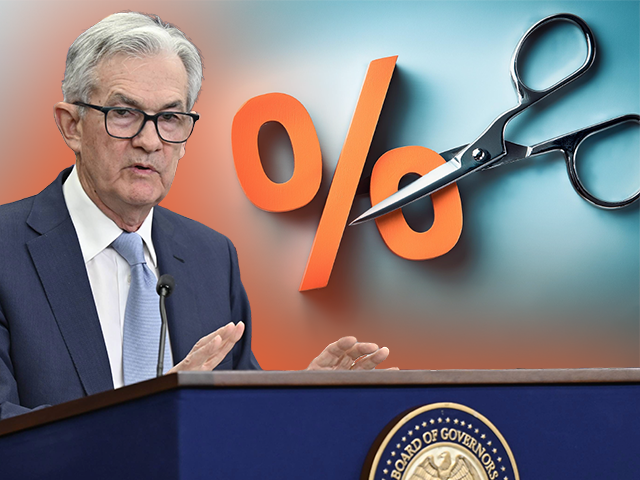The Inflation Surged Upended Fed’s Plan to Cut
This week’s meeting of the Federal Open Market Committee (FOMC) will test the resolve of Fed officials. Will they stick by their forecast of a single rate cut this year or capitulate to financial markets that are pricing in multiple cuts this year?
When the FOMC met in the middle of June, the median forecast of Fed officials was for a federal funds rate of 5.1 percent by year-end. That translates into a single cut from today’s range of 5.25 percent to 5.50 percent.
Importantly, this represented a change in forecasts from the last time the Fed released the projections back in March. At that point, the median projection was for a year-end rate of 4.6 percent, which would have entailed three 25-basis point cuts.
What happened between the March and June meetings is that it became clear that inflation had surged at the start of the year, upending the Fed’s plans and calling into question whether inflation really was so strongly on a path to two percent that it would continue to decline even in the face of rate cuts. Fed officials decided that instead of rushing to cut, it would be prudent to wait for more evidence that inflation really would keep falling.
The Revival of Rate Cut Hopes
In the months since then, inflation has come down. The personal consumption expenditures (PCE) price index, which had increased at a 3.4 percent annual rate in the first quarter of the year, rose by 2.6 percent in the second quarter, according to the “advance” estimate released last week. Financial markets have concluded that the first quarter was a “head fake,” an anomaly that can be pretty much ignored.
The problem with this view is that we have been here before. The advance estimate for PCE inflation in the fourth quarter of last year showed prices rising at a 1.7 percent rate, down from 2.6 percent in the third quarter. This was revised up a bit to 1.8 percent in the later estimates and set the stage for the Fed and markets to enter this year anticipating several cuts.
Given this very recent history of an unexpected surge in inflation, it would be incredibly imprudent for the Fed to start cutting rates after just one-quarter of benign data. It would be far safer for the Fed to simply hold rates at their current level and wait for another quarter or two to confirm that inflation really is moving down sustainably.
The Economy Has Cooled But Is Not Cool
If the economy were rapidly cooling or showing signs of strain, the situation might be different. But economic growth has accelerated. The government’s broadest measure of growth, gross domestic product, expanded at a 2.8 percent rate in the second quarter. Income after taxes and inflation rose by one percent. Far from consumers pulling back and engaging in the kind of precautionary saving that sometimes brings about a slowdown, the saving rate fell.
Personal consumption expenditures—government speak for consumer spending—rose 2.3 percent in the second quarter, a big increase from the 1.4 percent recorded in the first three months of the year. Spending on durable goods jumped 4.7 percent. Nonresidential fixed investment, a proxy for business confidence, rose 5.2 percent, including a massive 11.6 percent increase in equipment investment.
The more recent data has done nothing to change the picture of an economy that is nowhere close to crying out for looser monetary policy. Retail sales in June came in above expectations, with core control sales rising 0.9 percent and upward revisions to the prior months. If not for the cyber-attack on auto dealers, it is likely this would have come in even stronger.
Industrial production was better than expected, as well. Manufacturing output jumped 0.4 percent, and May’s increase was revised higher to a one percent gain.
The headline S&P Global “flash” purchasing managers index rose from 54.8 in June to 55.0 in July, the highest reading since April 2022. It showed that the service sector expanded in July at the strongest rate since March 2022.
While there has been a lot of talk about the labor market cooling, it’s important to note that this has been a very slow process. Unemployment has climbed slowly and unevenly, which looks more like normalization rather than a weakening of the labor market. This is very different from a recessionary rise in joblessness, which almost always involves a rapid climb.
Given this economic backdrop, we think Fed officials will probably want to stick with the June forecasts. But with no projections to release at the July meeting, it will fall to the FOMC statement or Fed Chair Jerome Powell’s press conference to reset market expectations. Most likely, Powell will try to gently push back at his press conference with a message of patience, followed by similar messaging from Fed speakers in the weeks that follow.
It is possible, however, that the committee has gained more confidence on inflation than we think is reasonable. In that case, it might want to allow the market to persist in the idea that the rate cut cycle could begin in September. In fact, it might be prudent to do so in an attempt to avoid accusations of a “September surprise” rate cut that would be perceived as an attempt to boost the political fortunes of the Democratic presidential nominee.

COMMENTS
Please let us know if you're having issues with commenting.